About
James Baldwin was one of the 20th century’s most incisive thinkers and writers. In our own era, as political rhetoric, state violence, and popular uprising bring racism into stark relief, many Americans have been turning to Baldwin’s work for insights from the Civil Rights Movement and the years that followed. In his most recent book, Princeton African American Studies Department chair Professor Eddie Glaude brings Baldwin’s wisdom to today’s challenges. In this episode, Laura spends the full half-hour in conversation with Professor Glaude about his book, Begin Again: James Baldwin’s America and Its Urgent Lessons for Our Own.
To listen to the uncut interviews, and to get research and reading notes for this episode, become a Patreon partner here.
Guest
- Dr. Eddie S. Glaude Jr., is the James S. McDonnell Distinguished University Professor and chair of the Department of African American Studies at Princeton University. He is the former president of the American Academy of Religion, the largest professional organization of scholars of religion in the world. Glaude is the author of a number of books, including Democracy in Black and Begin Again. He hails from Moss Point, Mississippi, a small town on the gulf coast, and is a graduate of Morehouse College in Atlanta.
Where to Watch
You can watch this episode on your local WORLD channel at 11:30 am ET on Sunday, February 7, or on your local PBS station.
Click here to search all airing times near you.
Or
Click here to watch online on YouTube. The episode will be made available at 11:30 am ET on Sunday, February 7.
Prefer to Listen?
Transcript
– This queer black man, Baldwin brings to the table this kind of disruption of widely shared assumptions about black politics in particular, and American politics in general. He knew the price of the ticket to become American is to become white. And he screamed selfish, deep-seated racism have broken the body politic, broken the background agreements that allow us to be together. Reaganism or Trumpism, neo-liberalism, or whatever you want to call it, is bankrupt.
– Born in Harlem in 1924, James Baldwin grew up in poverty in New York City. In 1948, he moved to Paris to become a full-time writer. His first novel, soon to become a classic, “Go Tell It on the Mountain” was an autobiographical work about growing up in Harlem. Throughout the rest of the ’50s, Baldwin moved around Paris to New York City to Istanbul. His novels, “Notes of a Native Son” and “Giovanni’s Room” explored themes of homosexuality as well as interracial relationships. As an openly gay man, James Baldwin also became increasingly outspoken condemning homophobia. In the early 1960s, Baldwin returned to the U.S., called by the movement taking place at that time. His book “The Fire Next Time” dealt with issues of black identity and the state of racial struggle. “No Name in the Street”, a collection of nonfiction reflections on the events of that era, came out in 1972. In the epilogue, Baldwin wrote about an old world dying, and a new one kicking in the belly of its mother to be born. “The birth will not be easy, “and many of us are doomed to discover “that we are exceedingly clumsy midwives,” wrote Baldwin. As we enter the second year of a pandemic and another Black History Month with a new administration in Washington that is already looking not so new, in a country that is clearly having a very hard time giving birth to a new era, more and more Americans have been turning to the work of Baldwin and to professor Eddie Glaude, Chair of the African-American Studies Department at Princeton University. Glaude’s work on Baldwin has been described as a spellbinding conversation across eras. Glaude’s most recent book is “Begin Again: James Baldwin’s America “and Its Urgent Lessons for Our Own.” Eddie Glaude, welcome back to “The Laura Flanders Show”, so glad to have you.
– It is my absolute pleasure.
– I’m gonna start with this moment in which so many people, including yourself, have been drawn to the work of James Baldwin. Why is it, do you think?
– Well you know, I think it has a lot to do with his example, this queer black man, in a moment where there seems to be this ongoing desire to queer black politics in particular, and to queer American politics in general. And what do I mean by that, in using that word coming out of an academic context is to upend its assumptions, to shift its center of gravity, to allow a kind of misfittedness, to change how it is executed, that is politics is conceived and executed. And so Baldwin brings to the table this kind of disruption of a widely shared assumptions about black leadership as male, as preacherly, as heterosexual, and the like, and he just disrupts it repeatedly. And then I think there’s a sense in which we’re catching up to it. He saw it. He saw Trumpism in Reaganism. He understood the nature of that fantasy, and gave us, at least gave me, resources to understand how we reach for the fantasy that was Donald Trump in some ways.
– So it seems like if it was relevant when we talked last time, which was a year ago, it feels all the more relevant now, the work that you’re lifting up and the way that you’re thinking about it. And yet, there’s always that sense of a door of opportunity of real change, of structural change, closing. How are you putting your foot in that door, if you like, and how do you think Baldwin would have us keep that door ajar?
– Well, we have to stand in the breach. We have to put our bodies there, and we have to bear witness to what they’re doing. You know, Baldwin in his last interview when cancer is ravaging his throat, he says, “I kept saying, I felt like a broken motor, “I kept saying the same thing over and over and over again.” He could only go to Texas so many times, but he kept bearing witness, you know? And he says in some ways he knew why the country did what it did. He knew why they cleaved to this idea of itself, why the nation cleaved to this idea of itself, because it required this notion of whiteness in order to absolve itself of guilt; to absolve itself of what it has done to generations of people. And here we are, in our moment right now, watching folks cling to it in a refusal to imagine themselves otherwise, because we know that for the last 40-plus years, we have been living under a political and economic regime that has fundamentally devastated our way of life; that all the evidence lets us know, all the evidence is clear that Reaganism, or neoliberalism, or whatever you want to call it, is bankrupt. It’s bankrupt, it has led to a society that where you have the top 1%, top 1/10th of a percent engaging in extraction, where everyday ordinary hardworking people are barely keeping their noses above water, where it’s transformed us from citizens into self-interested persons in pursuit of our own aims and interests, in competition and rivalry with others, such that there can’t be any robust conception of the public good. Selfishness, deep-seated racism have broken the body politic, broken the background agreements that allow us to be together. And Jimmy saw it, and he screamed. So how do we respond? To answer your question directly without all of the melodrama, I suppose, is that we bear witness, Laura. We just keep screaming the truth, as it were.
– Well, so let’s get very specific, ’cause I think part of our project here today is to try to give people some tools for how do they do this. Whatever field they’re in, whether they’re working on housing, or education, or healthcare, or whatever it is, how do we keep doing those first steps that you say, and Baldwin said, were so important, those first steps of beginning again and again and again. So let’s start with just defining our terms. When we talk about race, when we talk about blackness and whiteness, Baldwin says it’s not about fitting people into boxes, it’s about looking at power and relations. Can you talk about it?
– Sure, so these categories are ways in which human beings make sense of the mysteries of their lives. It’s the way we try to, in some ways, fix the world so that we can be more comfortable with the difference that confronts us. And it seems to me, at least, that whiteness in a certain way is really one way of talking about how certain bodies are valued over and against others, something we talked about a year ago, and how that valuation of people who are designated as white set the pathway, set the grooves for the distribution of advantage and disadvantage, and the world that we’ve built to reflect that reality. So when we think about race or racism, what we’re thinking about are patterns, historical patterns of disregard rooted in a certain idea of who’s valued and who’s not. And if we understand the society in that way, then we have to deal with Baldwin’s radical revolutionary inversion. At the heart of Baldwin’s corpus is this, I’ve been saying it over and over again, is that America’s original sin is not slavery. America’s original sin is not the extermination of native people. America’s original sin is the price of the ticket to become American, and that is to become white. So whiteness allows for all of those folk who flee from Europe to this place, allows them to see themselves in a particular sort of way, and then to hold on to that idol, and then to build a world that reflects it, which then justifies the extermination of peoples, which then justifies the enslavement of peoples. So when we think about race in this sense, Baldwin wants to say this is the category that allows us, or keeps us from grappling with the emptiness on the inside of us. So America is this unique expression of a certain kind of modern angst at the heart of the western modern project at work.
– The story of Baldwin sometimes leave women out, but there are so many in that story. Talk about his female lineage, if you will, or how you see that.
– Oh, sure. Yeah, you know, he dedicates “No Name in the Street” to a number of figures, but the first person is Berdis, his mother. And when you go to the cemetery, both him and his mother right next to each other. And the first words in “No Name in the Street” are Berdis’s words, Mrs. Baldwin’s words. There’s a sense in which Baldwin inhabits a kind of masculineness at his core, at times, that I think gets him into all sorts of trouble. But then, when you read Mel Princeton and the way in which he critiques Gide, or when you read “Freaks”, you see that there is this sophisticated kind of deconstruction of these gender categories that are rooted in his experience of women in his actual life; not only his relationship to his mother, but his own relationship to his siblings as the older brother who helped raise them. His youngest sister, for example, lived with him in Paris and the like, so they’re everywhere. But there are a couple of things in the book that didn’t make it. The extraordinary debate between him, and conversation between him and Audre Lord. Oh my God, Audre Lorde handed him his behind, it was really amazing to read. And then there’s something that I didn’t write that I talk about all the time is that not only coming to terms with my dad helped me write the book, but also reading the exchange between him and Nikki Giovanni. And if you ever get a chance to watch that YouTube video, it’s amazing, but there’s this moment when Baldwin is running that masculinity line about the man having to go to work and having to lie and wear the mask, and then he has to come home, and she says, “And you take it out on me,” and she says, “Well, why don’t you lie to me? “Lie to me.” And Baldwin is there, confused. Right now he’s this grand figure, and Nikki Giovanni is this young voice, brash, confident, but she stopped him in his tracks. And it’s in that moment that she gave me license to say to him, “You’re wrong, Jimmy. “You’re wrong, but I appreciate the risk.” If that makes sense.
– I think it does, but this question of understanding our society came back to me, of course, every election it comes back to me, why do white women vote the way they do? And just to illustrate how one can constantly be informed anew, even about things that you thought you knew, I was reading Stephanie Jones-Rogers’s book, “They Were Her Property”, about white female slave owners in the South. And I had only kind of started it before the election, I’d heard of it, I’d picked it up. But after the election, I started reading the details, and the one detail she described, and I’m just gonna warn people that they may be triggered, but the one detail she describes of a white woman slave owner, who tempts her enslaved female person by leaving candy outside her door, tempts her to steal it. And eventually the young girl does, and this woman, Stephanie describes, then asks her young daughter to come and help her keep the enslaved young woman under the rocker of her rocking chair while she rocks on her head until she’s disfigured. And that hit me in a whole new way, and I’m just saying, I’m gonna end my 50s this year, and I’m learning new things, newly, deeply painful things about whiteness and femaleness in America. And Stephanie suggests that 40% of slave owners were women. They didn’t own as many, they didn’t use them for the same purpose, but it was property that white people, white women, could own when they could own very little property. So I only insert that to say I’ve been doing this a long time, and that story was new to me and has affected me in a new way.
– And you know, those questions connect, ’cause Baldwin wants to say that the depth of the American sickness cuts to the heart of who we are, that these people knew that they was selling their children. That gives us a sense of the depth of the sickness, or that white women could participate in unimaginable cruelty, as they themselves benefited from whiteness itself, even as they were subject to cruelties of patriarchy. So there’s this deeply personal sense, ’cause Baldwin insists, he uses the line in “No Name in the Street” from Socrates, that the unexamined life is not worth living. And he says it because he thinks the messiness of the world is actually a reflection of the messiness of our interior lives.
– You say it was personally painful for you to do this work, and that had something to do with your relationship with your father. You don’t go into it deeply in this book. Maybe there’s another book there. But talk about that, and what it’s done to you to admit you still have pain to deal with.
– Yeah. So here I am, trying to write about Jimmy. I’ve been teaching him for 20-plus years, reading him for 30, and found myself grappling with the fact that I’m this wounded little boy whose father deposited fear in his gut from an early age. You know, there’s a story I’m telling, I’m writing this book called “The River City”, named after my little hometown in Moss Point, and my mother tells this story, and she tells it with a laugh. My dad had just returned from Vietnam, I’m in the crib next to the bed and I wanted to wake them up, so I was throwing my bottle, my water, the milk, onto his face. And he woke up and snatched me and had me in the air. And that’s all my mother could see was my one onesie and my feet swaying. And she tells it in a joking, loving manner, but it becomes for me a kind of image that’s prior to my memory, of this man depositing fear in me. And I’ve been trying to prove ever since that I’m courageous. And so I’ve been writing, so I’m trying to write about Jimmy, right? And I could not get the sentences on the page until I confronted me. Otherwise, I was just trying to imitate, I was mimicking, I couldn’t write my sentences. And so Jimmy has his Johnny Walker Black, I have my Jameson, and so I was just downing Irish whiskey trying to write my kind of sentences. But it required to deal with the messiness here before I could say anything about the messiness in the world.
– So what should we do at this point, Eddie, Professor Glaude, do we pivot neatly to a slightly more optimistic and positive part of this interview? Or do we keep going here?
– Keep going, let’s keep going. We gotta deal with the funk. We can do both and, we can do both and.
– So let’s talk about both and. So when you talk about we need living arrangements, and political arrangements, and policies that remedy some of what we’re talking about, what might they look like?
– I think we need a public infrastructure of care, to move beyond social safety net talk. We don’t need that, that’s language that’s tethered to the New Deal and the like. We don’t need to go back to that frame. I think we need a broad public infrastructure of care that reflects a different kind of moral and social contract we have with each other, because they’ve broken the previous contract, that contract no longer obtained, the contract that kept American workers from organizing like the rest of the world, all that’s gone, it’s out the door. The contract that salvaged capitalism with the New Deal, that’s gone. And so we need a different kind of moral and social contract with each other. And I think one of the ways to represent that is a public infrastructure of care that has at least three legs. One involves healthcare, where we say to each other that we’re going to invest in the fact that all of us will have quality healthcare, no matter our class, no matter our zip code, no matter our color, and the like. So you know, we’re gonna make that a central feature of our being together. Another leg would be education. We’re gonna guarantee every child in this country not only that they can make dreams, that they can dream dreams, but they can acquire the ability to make those dreams a reality. So no matter your zip code, your color, your gender, we’re going to spend the same amount of money on every child. We’re not going to allow wealth and color to determine advantage and possibility. So we’re gonna invest in education from preschool all the way to college. That’s gonna be our contract with each other. And then the last leg of this stool that’s part of this public infrastructure of care as I imagine it would be safety and security. We’re gonna shift from law and order, that old monster, that boogeyman, and we’re gonna say that every community deserves to be safe, and every community deserves to be secure. And what does that mean? We’re going to address those social forces that destabilize our communities. We’re gonna talk about not just social services in this narrow sense, but we’re gonna reflect in how we budget. This is what I say, this is how I parse using W.V.O. Quine’s language of explication by elimination. This is how I parse defund the police. Budget your values. Budget your damn values. And so that last piece has everything to do with thinking about what does a safe community look like? What does a secure community look like? And so to me, this new moral and social contract will reflect itself in policy initiatives that suggest a different way of being together that’s not overdetermined by whiteness distributing advantage and disadvantage, or money overwhelming what we say we care about and who we care about.
– You went to Montgomery in the course of reading this book, and that’s a place that has a lot to teach about everything you’ve just said. I was there maybe around about the same time, maybe a couple of years ago, and talked to Bryan Stevenson about what had happened in this town where it’d been your classic, not-doing-too-great kind of Southern town, until he comes along. And the Lynching Museum, and the Museum of Incarceration, and American history that has not been taught is suddenly put on the historic markers, or new markers are erected all through town. And I filmed some of the school kids reading those markers aloud, and I filmed Bryan Stevenson opening a new part of the museum that had to do with lynchings in the ’50s and since. Claiming, or just reclaiming, or just claiming for the first time the truth of that history has been really great for Montgomery. And it was almost as if the town was proud of itself, and I’m talking white as well as black.
– Yeah, you know, the civil rights tourist industry is complicated though.
– Well, okay, but–
– And what I mean by that is that I read the Legacy Museum and the Lynching Memorial as efforts to disrupt the way that story is narrated in places like Montgomery. And you know, it’s always this kind of a jarring juxtaposition. I flew into Birmingham and I drove to Montgomery, and between Shuttlesworth Airport and the Legacy Museum was all of this detritus in between. The big Confederate flags, the Confederate Monument Memorial Highway, all of this stuff in between the two. And so what I love about what Bryan Stevenson has done in Montgomery is that he’s confronted us, and he’s confronted the city, with a dimension of the story that isn’t about triumph. When you confront the soil, and I remember these scenes, Laura, where people would be in the museum and they’re leaning to see if they read if that jar of soil came from where they were from. And so the violence, those coffins, steel coffins hanging, that’s what they look like to me, that’s not going to end in triumph. The arc of that story is not the absolution in any melodramatic sense. So I think what he’s doing in this fascinating way is forcing us to confront a dimension of our story that could actually open us up to a different way of being in the world, but also resist the standard narrative of the civil rights tour, which is always triumphant in a way. So it’s really fascinating to me.
– But at the same time, be kinda good for the economy of the place.
– You took it right out of my mouth. That’s exactly what I was gonna say. Look at downtown Montgomery, it’s dramatically different than anything I could remember in the ’80s.
– So the last time we had you on the show was in April 2020. I asked you then the question that I often ask at the end of the show, what do you think is the story the future will tell of now? And you said that this will be remembered as a time when the nation faced a momentous choice; either we will finally choose to leave behind the baggage that has kept us from being a genuine democracy, or the nation would double down on its ugliness and that would serve as the last choice it could ever make. So how do you think we’re doing? Have we passed that point, are we still in it, which?
– We’re still in it, and we have to understand that in the interim between that answer and the answer today, so many people have been put in the ground. We’ve lost so many for no reason. And so, I’m still praying, I’m still hoping, I’m still acting, but the answer is not yet, end.
– Professor Eddie Glaude, thank you so much. You can find our previous interview at our website, and a whole lot more on Baldwin in our archives, thank you.
Accessibility
The Laura Flanders Show is committed to making our programming, website and social media as accessible as possible to everyone, including those with visual, hearing, cognitive and motor impairments. We’re constantly working towards improving the accessibility of our content to ensure we provide equal access to all. If you would like to request accessibility-related assistance, report any accessibility problems, or request any information in accessible alternative formats, please contact us.

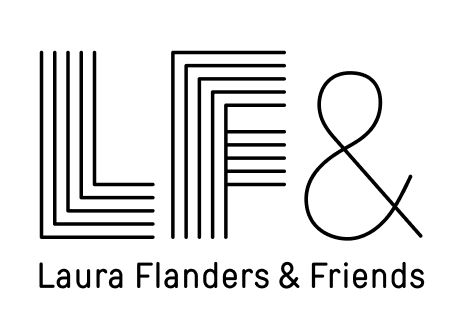
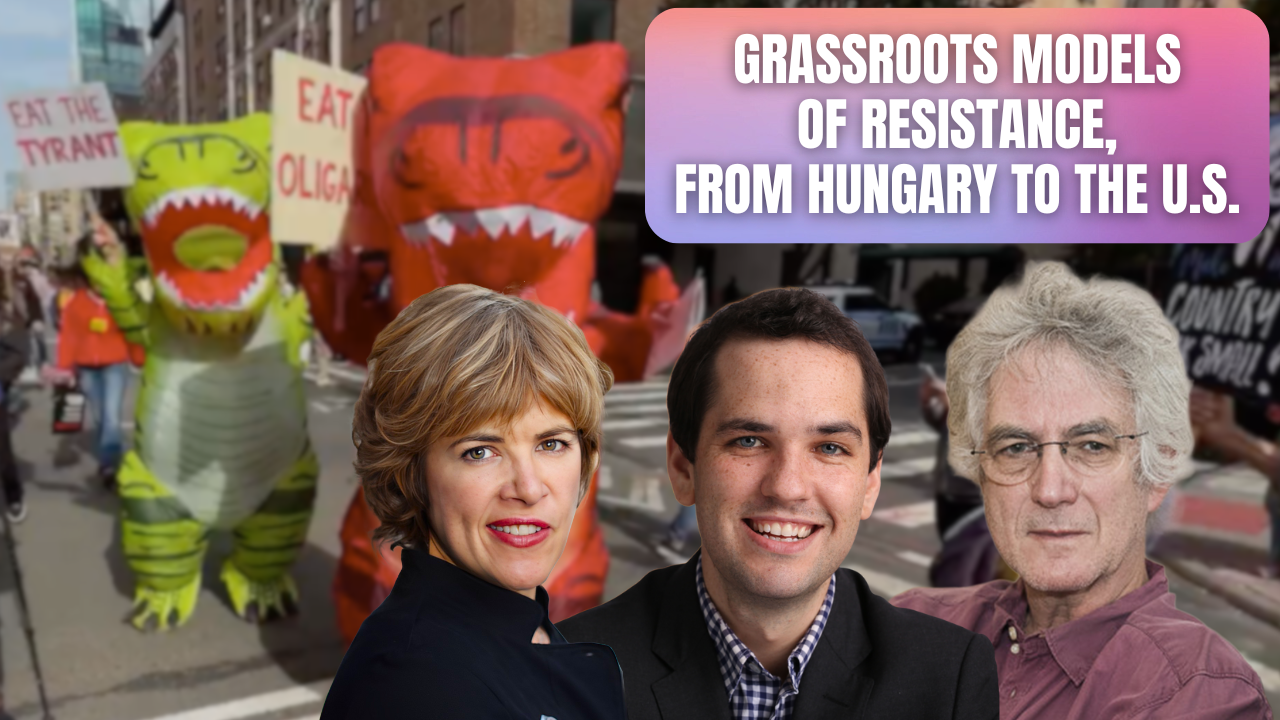


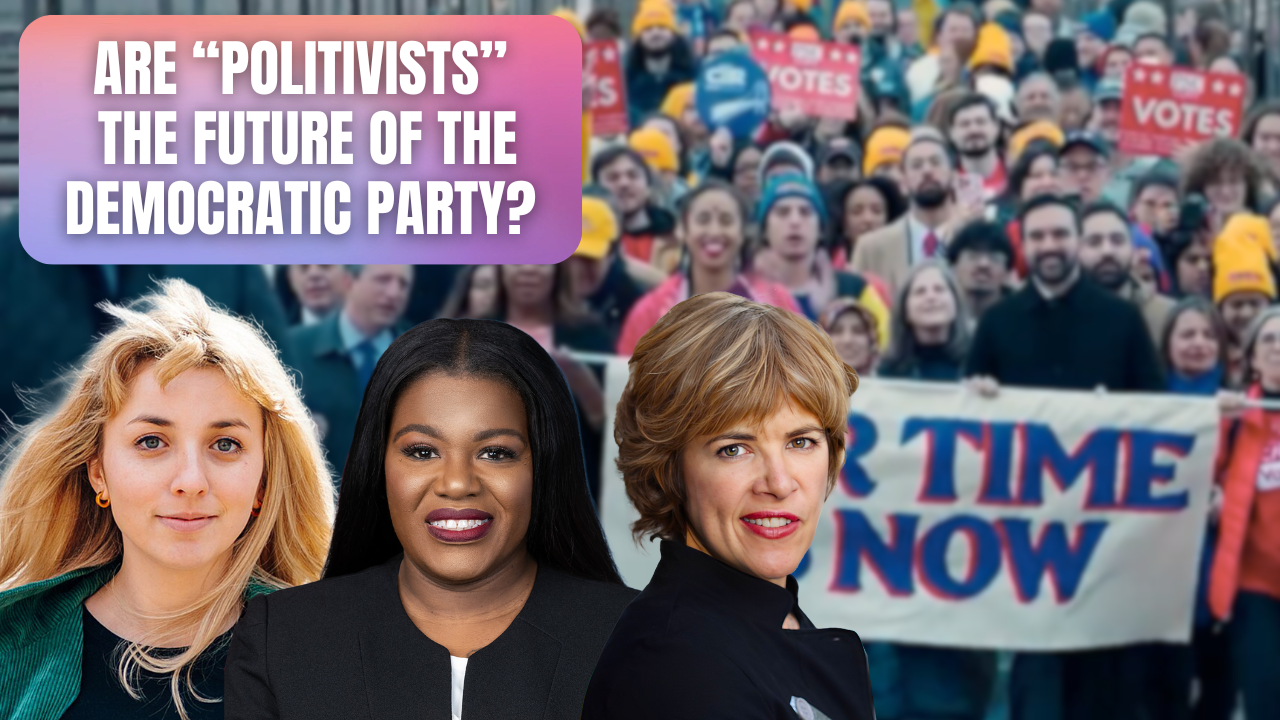
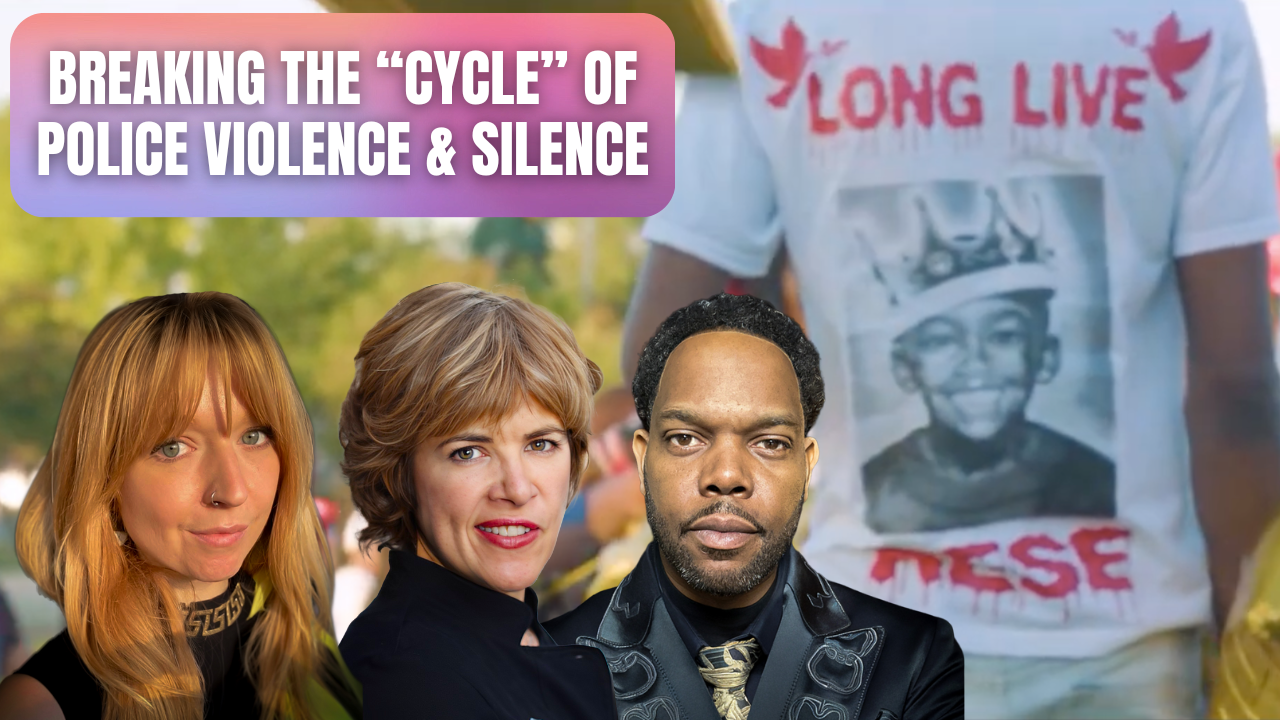
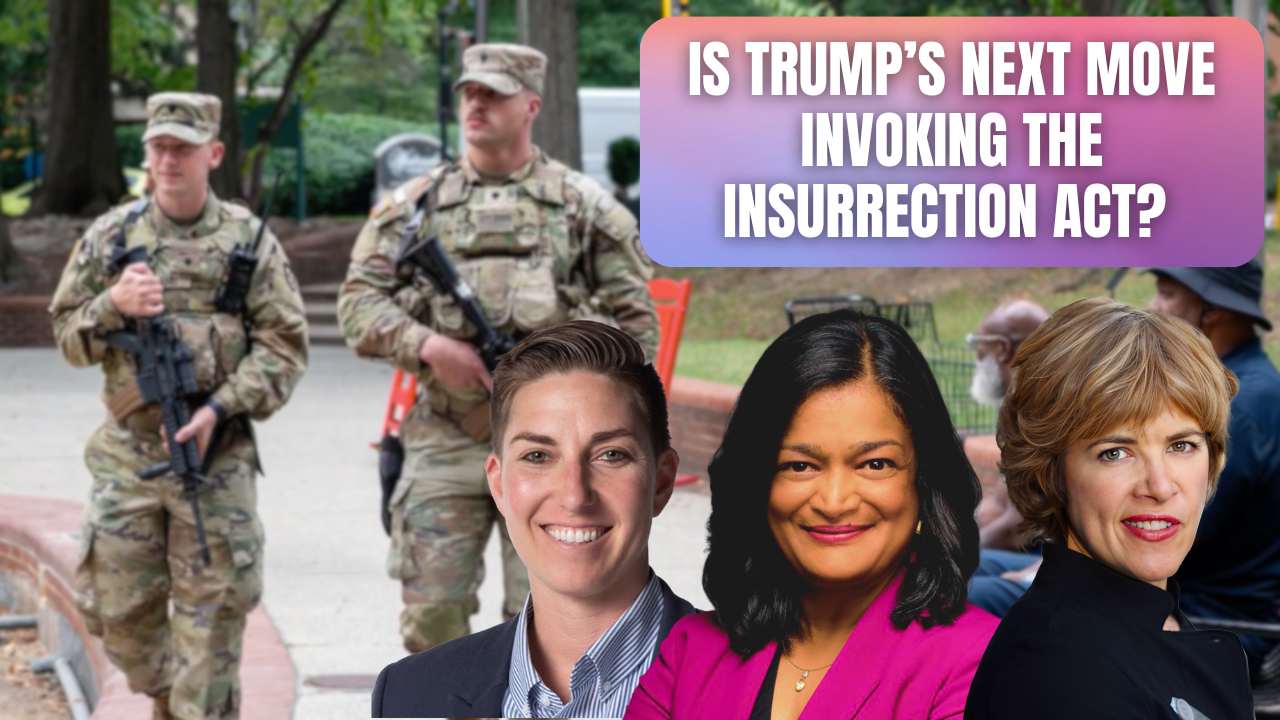
Leave a Reply